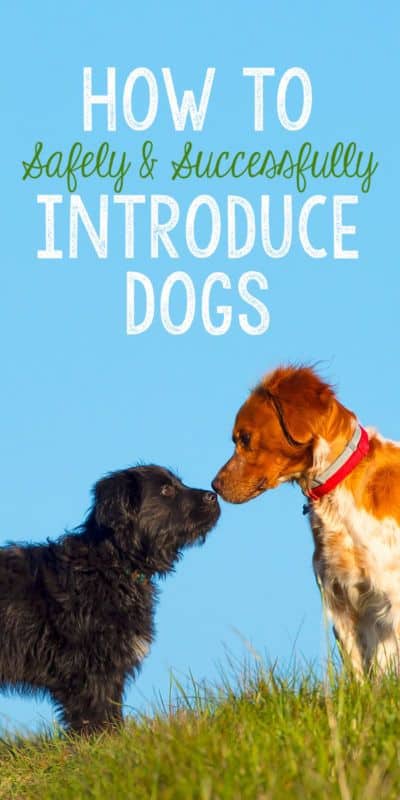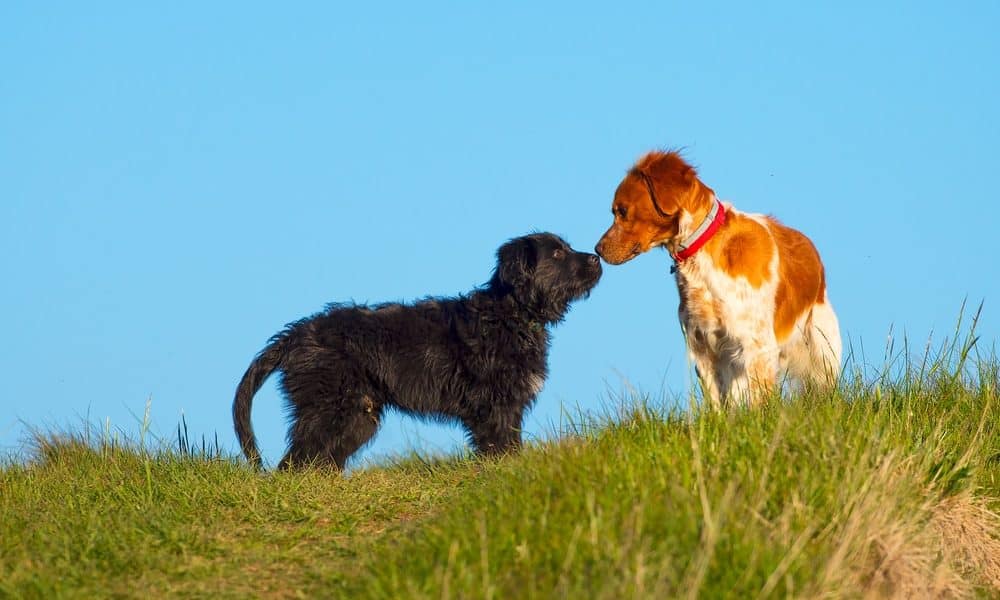
There comes a time in nearly all dog owners’ lives when you’ll need to introduce your dog (or dogs) to a new or unfamiliar four-legged friend. Because, like humans, not all dogs are instant friends, it’s important that those introductions be carried out safely and in a controlled environment.
Done properly, an introduction between two dogs, even if they don’t seem to get along at first, can lead to a lifelong, harmonious friendship.
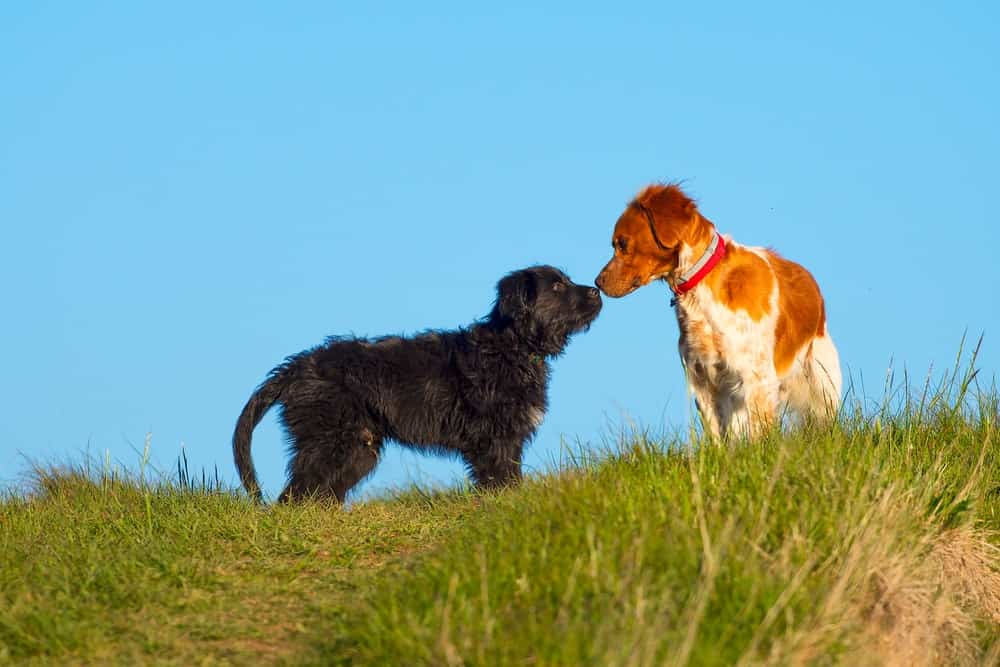
Always practice safety and caution when introducing your dog to one he’s unfamiliar with. Although some dogs instantly connect with one another, other canine friendships may take a great deal of time and effort to develop.
Follow these guidelines to safely and successfully introduce dogs:
Before Getting Started:
As with any new experience for your dog, you’ll want to set your four-legged friend up for success. Plan introductions for a time when your dog is calm and relaxed. Exercising your dog, with a long walk or an intense game of fetch, beforehand is an excellent way to ensure he’ll be calm for the introduction.
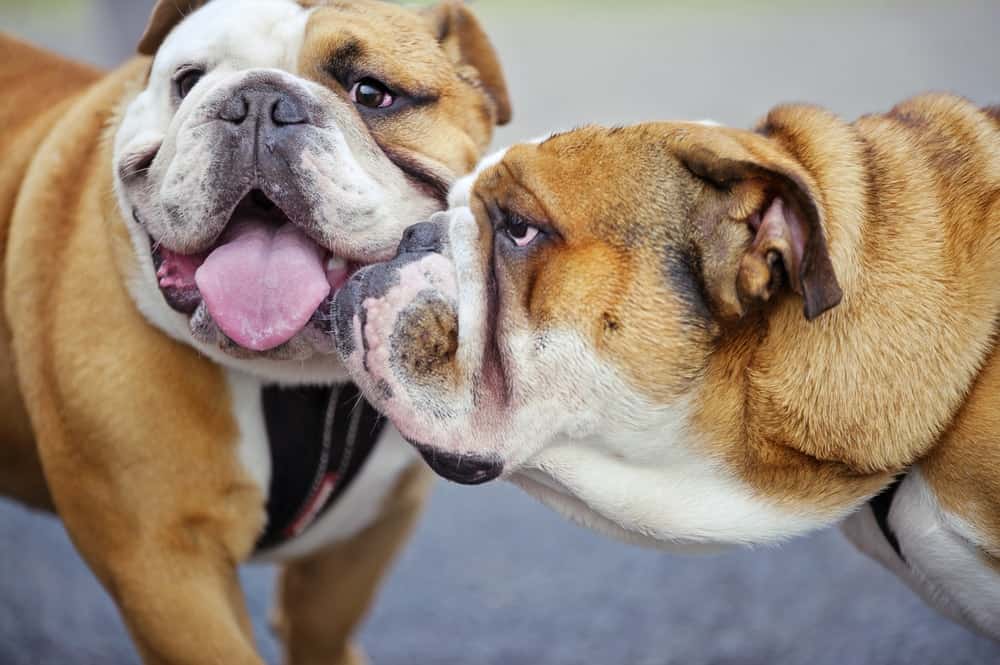

Familiarize yourself with your dog’s body language, particularly the signs that he’s uncomfortable. These signs can be very subtle, such as lip-licking, yawning, a tightly closed mouth, avoidance or looking away, or can be obvious, like growling, barking, and lunging. During introductions, you’ll need to closely monitor your dog’s body language and either slow down or take it back a notch if he begins to show signs of stress.
Prepare to keep introductions short and sweet to ensure their success. While some dogs may hit it off right away, others will need time to feel comfortable and accept a new friend. Don’t be discouraged or disappointed if your dog needs to take things slowly. Some introductions can take days or weeks to develop into a friendship.
Grab your supplies! To safely introduce two dogs, both dogs should initially be restrained using a properly fitted collar or harness and leash. And, you’ll need to have plenty of high-value treats stashed in your treat pouch to reward good behavior and build a good, positive association with the new dog.
Do’s and Don’ts:
- Do keep introductions a positive, happy, and calm experience for your dog.
- Don’t attempt to introduce a dog with a known history of aggression without the help of a professional trainer.
- Do be prepared to give your dog as much time as he needs to meet to a new fur-friend.
- Don’t force two unfamiliar dogs to interact with one another.
- Do always monitor newly introduced dogs until you’re confident they’re safe to be alone together.
- Don’t expect all dogs to instantly get along and play together.
- Do understand that some dogs simply may never get along.
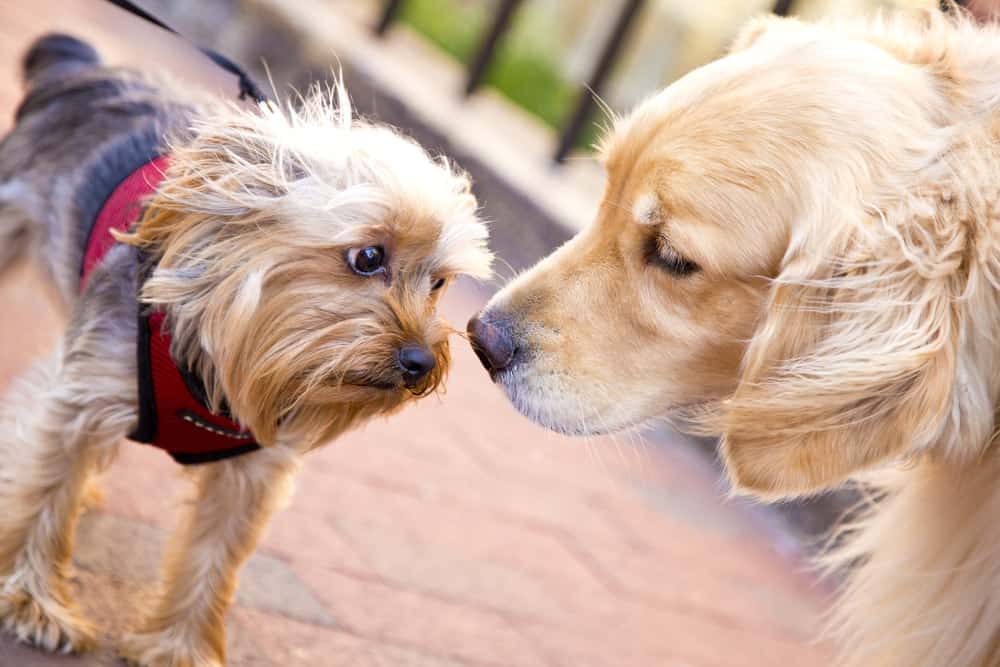

Head Outdoors to Neutral Territory:
While a local park or a neighbor’s backyard are excellent places to make the first introductions, it’s important to choose a location that’s completely unfamiliar to both dogs. Naturally territorial, a dog may view a park or backyard that he regularly frequents part of his territory and may react negatively to a new dog invading his space. Depending on the personalities and comfort levels of each dog, you may be able make a successful introduction on a small stretch of unfamiliar road or, you may need a much larger open space, like a park or large, neutral outdoor space.
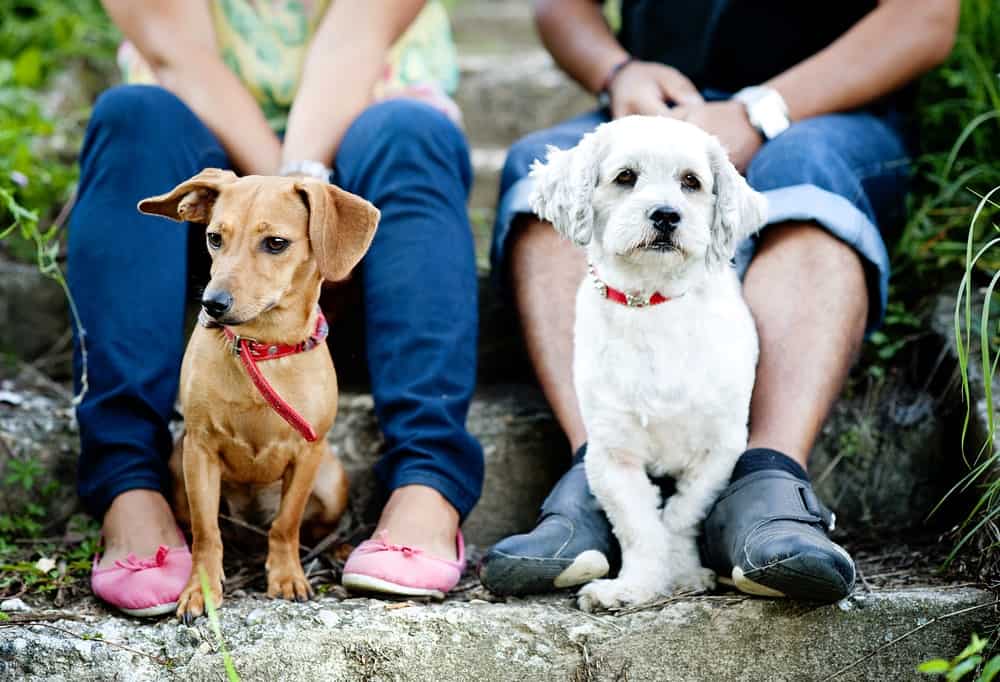

Start With a Simple Walk:
With both dogs securely leashed and kept at a long distance from one another while they are being walked. The dogs should be close enough to be aware each other, while at a far enough distance as to not become provoked or excited by the other’s presence. For some dogs, this first walk can happen as close as 10-feet or less apart, while other dogs may require greater distance.
When both handlers are walking closely enough that the dogs are aware of each other, but far enough apart that they aren’t becoming excited or agitated, reward your dog with a high-value treat and praise when he looks at the other dog. By rewarding your dog for simply looking at his future friend, you’re helping to create a positive association with the new dog.
Repeat this step often, only moving the dogs closer together by short distances at a time and only when both dogs are calm and relaxed. If one or both dogs, at any time, becomes excited, agitated, or shows signs of stress, distract your dog and only return to the introductory walk when both dogs have returned to a calm, stress-free state.
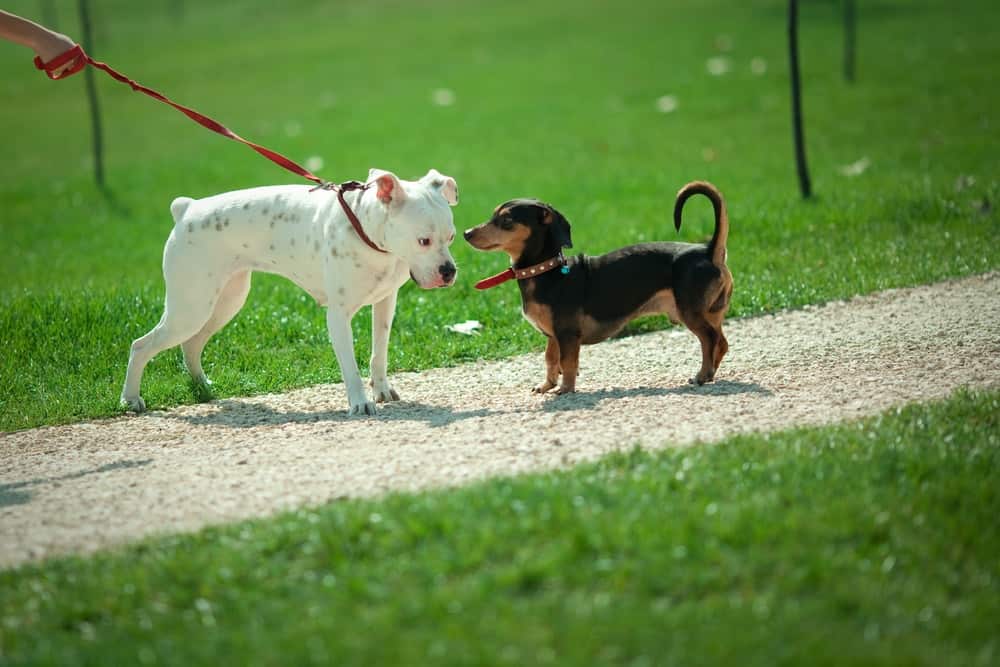

Next Steps:
Once both dogs are comfortable being walked within close proximity to one another without incident, take turns walking one dog directly behind the other. Then, switch positions. This gives each dog an opportunity to smell the dog in front of them without becoming overwhelmed. Continue rewarding both dogs for walking nicely without reacting excitedly or negatively to each other.
If this step in the process goes smoothly, you can now walk the dogs side-by-side, as long as both remain calm. If, at any point, one or both dogs becomes excited, stop what you’re doing, allow the dogs to relax, and begin again at the closest successful distance. Continue progressing at a pace both dogs are comfortable with until eventually you can allow them to interact while being closely monitored.
Continuing to Build the Friendship:
Now that both dogs are comfortably interacting in neutral territory, you’re ready to move the introductions to a more familiar location. Remember, however, that moving to a familiar location may trigger some territorial behavior.
If you’re bringing a new dog to an existing dog’s home or backyard, be sure to put away any toys, bedding, or food that may lead to conflict. Consider keeping newly introduced dogs in the home separated by a baby gate and monitor how they respond to one another while safely separated before allowing them to romp and play together. And, of course, always handsomely reward good behavior and positive interactions.
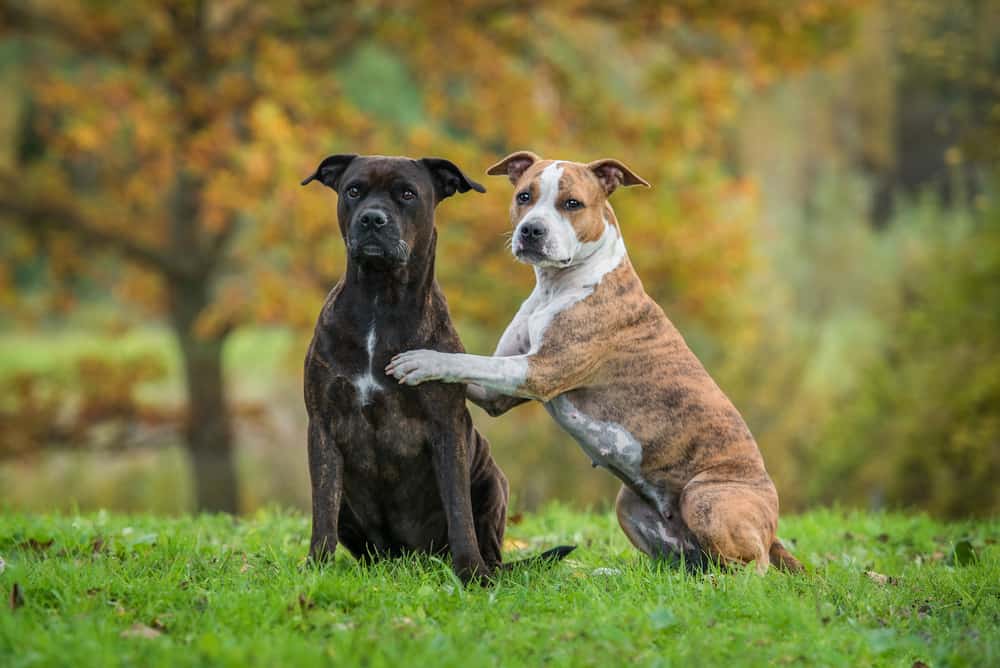

Until you are absolutely certain both dogs are comfortable and safe together, never leave two newly introduced dogs unattended together. Instead, separate the dogs in crates or securely in different rooms of the home while you’re away.
And, don’t hesitate to seek help from a professional dog trainer if introductions don’t seem to go smoothly.
Do you have any additional tips or tricks to successfully introducing unfamiliar dogs? Please, share your experiences in a comment below!
Found this article helpful? Pin it!
